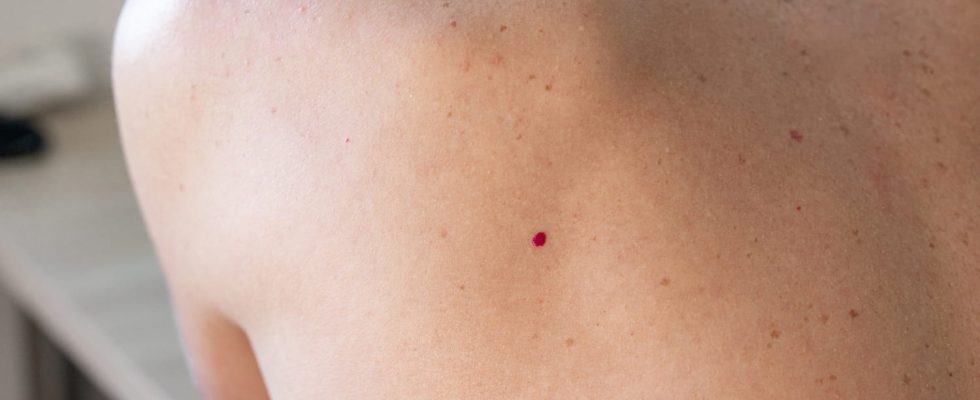Ruby angioma is characterized by small red spots on the skin, often on the trunk, arms or legs. It has a particularity which allows us to recognize it, states our dermatologist.
After one Sun exposure or without obvious causes, you have noticed small spots on your skin, bright red color ? It may be an angioma.ruby” (like color). What is it? Do you need to consult? Treat them? Answers with dermatologist Marie-Estelle Roux.
Definition: what is a ruby angioma?
Ruby angioma is a dermatological condition also called “ruby stain“. It’s about a malformation of the small capillary vessels located in the skin. This condition takes the form of small circular red spots, localized, who measure a few millimeters. Sometimes the stain can be a little raised. Ruby angioma has a particularity : “If we press it, the redness fades then returns. It means he is bleeding out to re-fill himself.”, explains Dr Marie-Estelle Roux. Angioma is often located on the face, trunk, sometimes hands, arms or thighs. You can have several.
What are the causes ?
Ruby angioma can occur as a result of hormonal phenomena such as pregnancy, after Sun exposuresunburn, taking certain drugs but “very often, there is no reason. Sometimes there is a family predisposition”.
Picture of ruby angioma
Is it dangerous?
The ruby angioma is benign, it has no negative evolution. It does not degenerate.
The dermatologist makes a clinical diagnosis. “We look to see if there are a lot of angiomas, we analyze the lesion with a dermatoscope to check if all the criteria are reassuring. In very rare cases, when the onset is very rapid and that we see a profusion of ruby angiomawe can search for a blood abnormality but only if the circumstances are unusual.”
What are the treatments for ruby angioma?
“We only treat if the angioma presents aesthetic discomfort, if it is located on a visible area of the face or chest, for example. To treat the angioma, dermatologists use the vascular laser. There are three types: pulsed dye laser, IPL and KTP. The laser cannot not be done on tanned skin.” After the treatment, it is advisable not to expose yourself to the sun for the next two weeks.
Thanks to Dr Marie-Estelle Roux, dermatologist.
